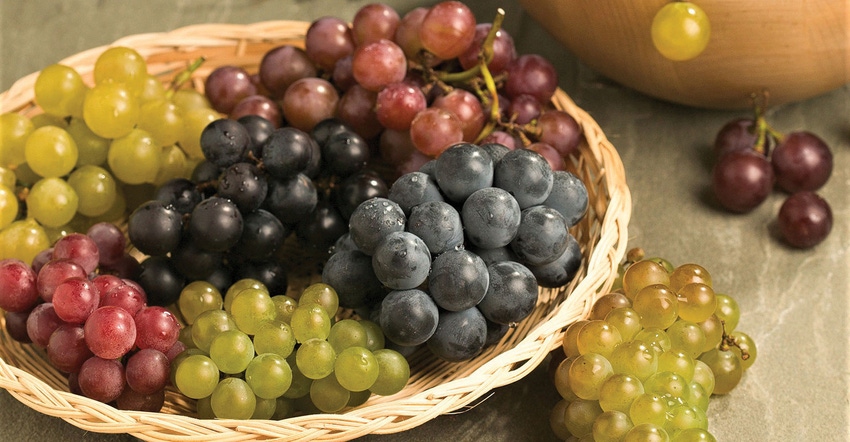
When it comes to table grapes of the future, they “won’t just be red, green, or black anymore,” says Andy Higgins, CEO of International Fruit Genetics in Bakersfield.
“If you look at apples, they’re sold by name and consumers have preferences,” he says. “Potatoes are sold by variety name and who would have thought 20 years ago that that would have been the case. It’s part of a trend that consumers want product choices.”
IFG seeks to do its part as a breeder of innovation, admitting that not all discoveries are winners and some turn out to be like the auto industry’s Edsel. “You can’t predict everything and new products get tested in grower trials, with marketers, and ultimately with consumers who vote with their pocketbook.”
Because it’s a nearly-decade-long process to develop new grape varieties, Higgins is already at work on the grandchildren of its popular top tier Cotton Candy and Sweet Sapphire introduction. The Cotton Candy variety that hit grocery stores in 2012 embodies the taste of spun sugar, reminiscent of the county fair confection. Sweet Sapphire, grown in the San Joaquin Valley, has been well received not only for taste, but for its unique shape.
“We’re continuing to look for nuances and improvements, understanding how those particular flavors got into those grapes originally and what more we can do with the taste,” Higgins says. “They won’t all be winners, but you’ve got to roll the dice.
“Plant and fruit breeding have been around for more than a hundred years, but I dare say that the last 20 or 25 years have seen a substantial increase in interest and improvements and the speed of those innovations.”
Grown with a purpose
It used to be that grapes were grapes. Like Thompson Seedless, discovered in 1894 and still being sold today over a century later. But grapes are now being grown for greater yield, easier production, better taste --- things that tick off the boxes for both the grower and the consumer.
“What we’re seeing in California and other grape-producing regions is a growing impact of climate change,” he says. “It’s real in the sense of more unpredictability in terms of temperature and humidity, factors that impact those who tend the vines.”
Growers are seeing pressure from drought, increasing labor costs, increasing land costs, increasing risk of disease. “They’re needing genetic solutions that can help give them some options to stay relevant and competitive,” he says.
He cites development work in the breeding of raisin grapes as an example. “Enormous amounts of acres used to be dedicated to raisins and that number has declined by about half over the last 20 years or so due to global competition. In order to stay competitive, we need varieties that can adapt more and be mechanically-harvested and mechanically-dried successfully.”
IFG released six new varieties of grape in 2020, varieties that are now being licensed and planted globally in order to bring new fruit into production.
Future is bright
“The future of innovation is bright with partnerships that will inspire new categories in table grapes and growers will ultimately create the value or full potential of those varieties,” he says. “They’ll give us the brutal truth on whether or not something works and they’ll help us pick the varieties to test and trial.
“It’s the growers who know about changing conditions involving disease tolerance, weather changes, the need for labor...and we can help the growers by breeding vines with less problems. It’s the grower partners who will get a vote on whether our varieties are going to be successful or not.”
Read more about:
GrapesAbout the Author(s)
You May Also Like




